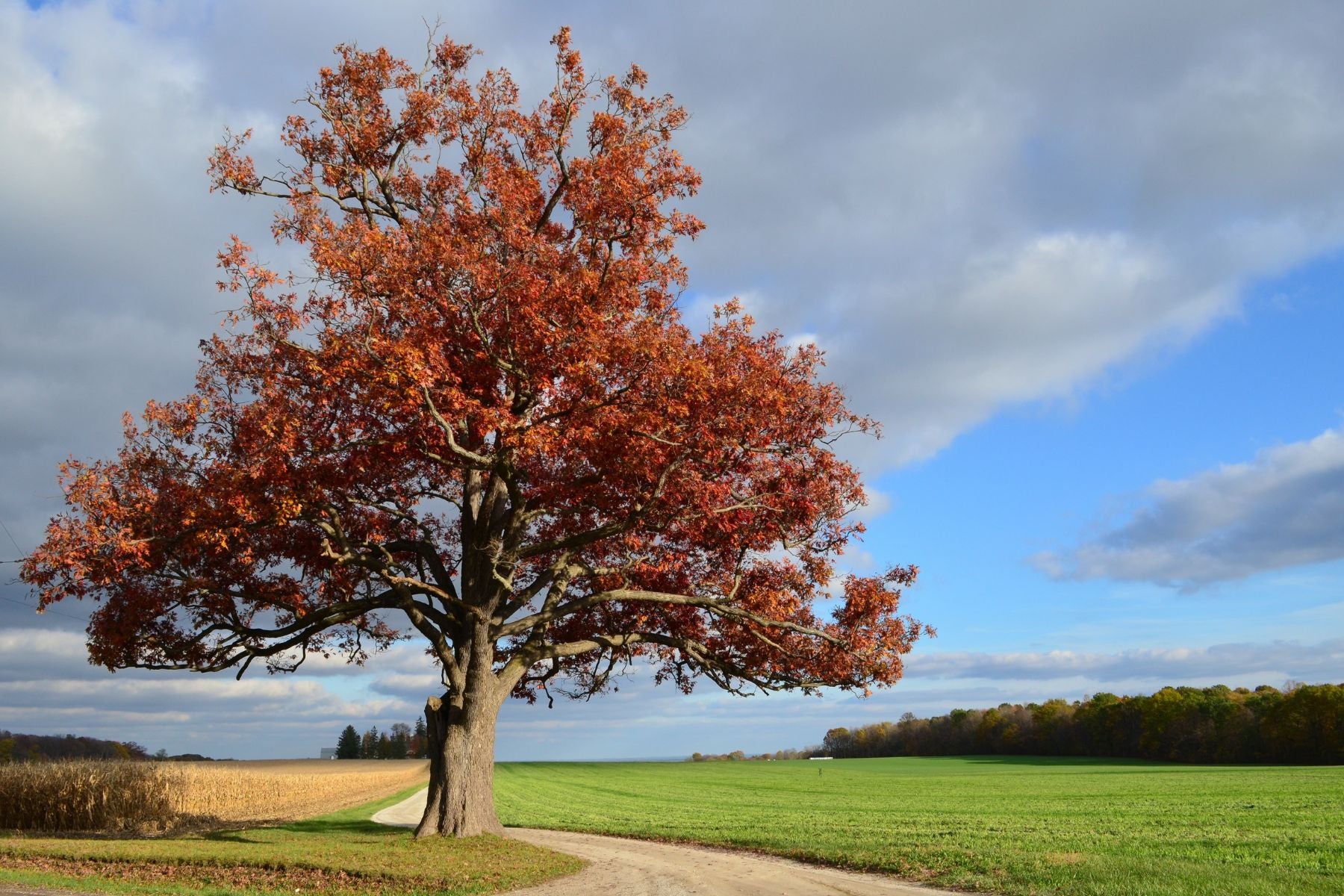You’re probably familiar with oak trees, as they’re common choices for growing on private and public properties. If you have trees surrounding your home, there’s a good chance one of them is an oak tree. Although they’re slow-growing, oak trees can survive for hundreds of years. Unfortunately, the oak population isn’t as robust as in the past, but you can bring them back by planting a few on your property. Follow along to learn everything about growing a mighty oak tree in your yard.
It All Starts With an Acorn
While oak trees don’t produce fruit, they do create acorns. Acorns contain oak tree seeds; therefore, it all starts with an acorn. Believe it or not, oak trees have male and female flowers, and they’re responsible for the development of acorns. First, the male flowers must pollinate the female flowers, and then acorns begin growing on the tree. Once the seeds inside are mature, the acorns fall to the ground.
If the soil conditions are ideal where acorns fall, germination begins, and a tree will start growing. With that in mind, not every acorn transforms into a tree because they are a common food source for wildlife, and the growing conditions aren’t always ideal.
The Best Varieties
There are hundreds of oak tree varieties, but not all of them grow in the United States. Follow along to learn more about the best and most common cultivars you’ll see across the country.
Live Oak
Live oak trees are incredibly unique because they’re the only evergreen oak variety, meaning they don’t lose their leaves in the fall or winter. They are a popular choice for the southern states, and they thrive in USDA zones 7 through 10. Interestingly, live oak trees can be as tall as 60 feet and as wide as 150 feet if they have plenty of room to grow.
Red Oak
Red oak trees are beautiful options for accent trees to line a street or property, as their leaves are a stunning shade of red. This variety is absolutely stunning in the fall, and it provides an ample amount of shade throughout the summer months. Red oaks can grow up to 100 feet tall and 50 feet wide, and they’re suitable for USDA zone 4 through 7.
Pin Oak
Pin oak trees are incredibly stunning, and they can adapt to almost any condition. However, they don’t like high alkaline soil. Furthermore, they thrive in USDA zones 4 through 8; red oaks are an excellent candidate for transplanting.
White Oak
White oak trees are a popular choice in urban and residential areas because they thrive in various locations. Fascinatingly, these trees can grow up to 100 feet tall! In the spring, white oak tree leaves appear to be a grayish-pink color but turn green in the summer months. You should avoid transplanting this variety at all costs; in fact, they grow best by planting an acorn in their permanent location.
Planting an Oak Tree
Planting an oak tree isn’t all that different from any other tree, but it can’t hurt to learn the basics to ensure your tree thrives as soon as it’s in the ground. Go through the following steps to plant your new tree.
Choose a Location
Before you even look at oak trees for sale, you should choose a good spot in your yard for your new addition. Be sure this spot gets plenty of sunlight and is far away from your home, powerlines, and other trees. It’s no secret that most oak varieties grow large, so provide at least 40 feet of space between your oak and other trees on the property.
Prepare the Soil
Although most oak cultivars are incredibly adaptive, they do require slightly acidic soil—typically between 3.6 and 7. Additionally, oak trees have a symbiotic relationship with fungi in the soil, which makes it more difficult for oaks to thrive in certain urban areas. To ensure the soil is adequate for oak tree growth, you can use special additives or apply compost and manure to increase the number and quality of naturally occurring fungi.
Dig and Place
Once you choose your acorn or receive your tree, dig a hole twice as wide as the root ball. Next, place the tree in the hole, and make sure it’s standing up straight. Fill in the area around the tree’s base, and push the soil down with your shovel or foot until it’s firm. After the oak tree is in the ground, be sure to water the ground thoroughly and spread mulch around the tree’s base.
Caring for an Oak Tree
Now that the tree is in the ground, your responsibilities don’t stop; in fact, you must care for your new tree until it matures. Read on to learn the best practices when it comes to oak tree care.
Watering
During the first few weeks after planting, you should water your oak tree daily. Three to four weeks after planting, switch to watering two to three times each week. Twelve weeks after planting, water the oak weekly until it establishes itself. Eventually, you may be able to water it once each month.
Fertilizing
Oak trees need fertilizer to stay in good health. With that in mind, you should fertilize whenever rainfall can help distribute the nutrients to all parts of the root system. You can use a balanced fertilizer or a nitrogen-based product, as these are both safe for oak trees. Believe it or not, leaving the leaves that fall from the tree on the ground can help add nutrients to the soil as they decompose, which helps your tree thrive.
Pruning
Oak trees don’t need a ton of pruning, but they can benefit from a yearly trim. For instance, you should only prune to control the tree’s size or remove dead branches. Removing healthy branches can cause damage to the tree and halt growth from that specific spot.
After learning everything to know about growing a mighty oak tree, you’re ready to plant a new tree or try to grow one from an acorn. Whether you’re an avid gardener or a beginner, you can successfully plant, grow, and care for a beautiful oak tree.




Comments
I note that newly planted oak trees benifit from slightly acidic soil. My soil is alkaline
So should I add ericaceous soil. Or is that not enough for the trees survival?
Thank you